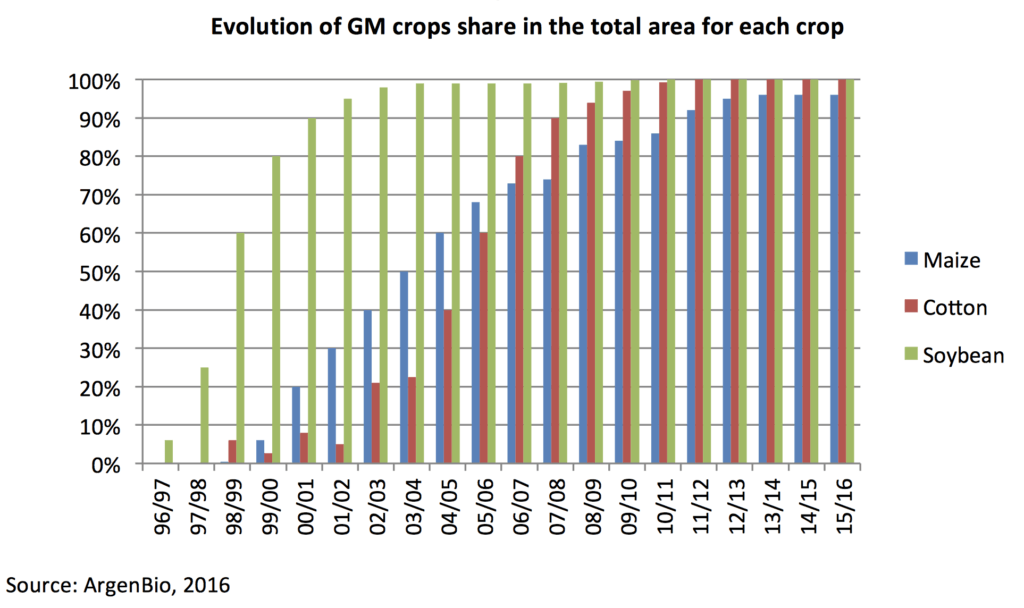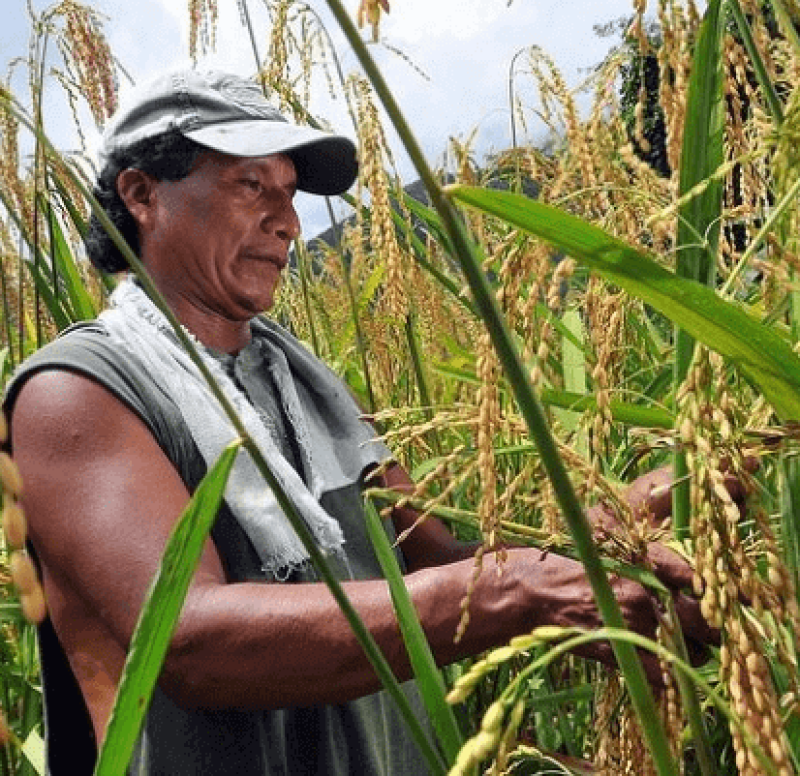Brazil will outperform the United States as the world’s largest soy producer in the next decade, While the increase in maize [corn] production will be driven mainly by Latin America, according to the new Agricultural Outlook 2017-2026.
[Editor’s note: Brazil and Argentina are the two largest grain growers in Latin America. In both countries, their use of GMO seeds for those two crops is between 90-96%.]
The report of the Organization for Economic Co-operation and Development (OECD) and the Food and Agriculture Organization of the United Nations (FAO), offers projections of 10 years to 2026 for the main agricultural products.
…
The widespread belief is that transgenics are all over the world, but they are not. The largest area of expansion is the southern cone of South America, with Argentina, Paraguay, Bolivia and Brazil.

According to the International Service for the Acquisition of Agro-Environmental Applications (ISAAA), 1.2 million hectares of genetically modified soybeans have been cultivated in Bolivia, although only certain modifications are permitted.
The IBCE president, Reinaldo Díaz Salek, indicated that in 2016 182,000 tonnes of maize were lost to the pest of the headworm, “something that could be avoided with genetically modified seeds. Bolivia then had to import corn for 20 million dollars. “
The argument of proponents of genetically modified seeds has to do with the global food crisis, while detractors argue the effects on health and the market itself.
The GLP aggregated and excerpted this article to reflect the diversity of news, opinion and analysis. Read full, original post: Transgénicos: La soya gana terreno en toda Sudamérica































